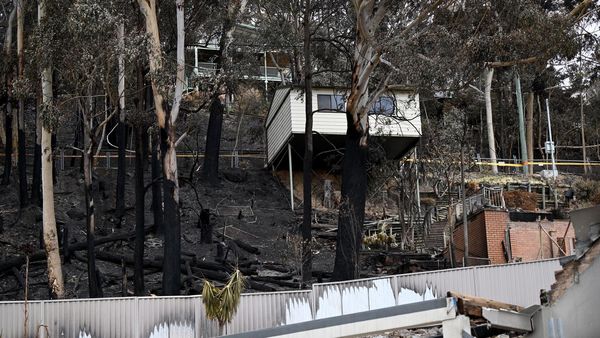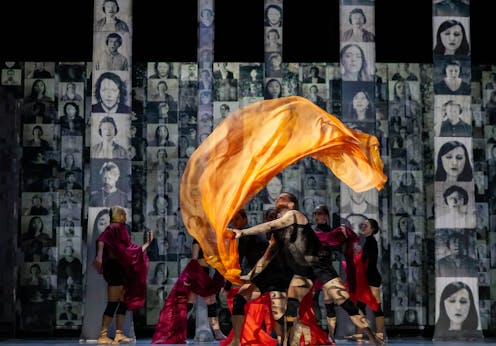
The 2022-2023 season is the first for the Edmonton Opera since its pandemic shutdown in March 2020. Globally, the pandemic forced performers to abandon live performance. After it became clear that this was more than a short shutdown, many performers turned to digital means.
Now live performance practitioners are, to varying degrees, embracing and critically reflecting on digital changes in society even as they return to the stage.
When the opera Orphée+, directed by Joel Ivany, was first co-produced with Against the Grain Theatre, the Banff Centre for Arts and Creativity and Opera Columbus in 2018, Ivany noted that its use of elements of digital design provided insights on human experiences created by screens.
The Edmonton Opera’s production of Orphée+ under Ivany’s direction following the city’s COVID-19 lockdowns is a powerful commentary on pandemic experiences of accelerated technology and human separation — and the adaptive nature of live performance.
Greek myth of Orpheus and Eurydice
Orphée+ is a contemporary interpretation of Christopher Willibald Gluck’s Orphée et Eurydice (Orpheus and Eurydice), a 17th-century operatic interpretation of a Greek myth about lovers separated by death.
Orpheus’s devotion to Eurydice attracts the attention of the gods, who give him a chance to win her back from the underworld. But the gods’ restrictions on Orpheus — that he must abstain from looking at Eurydice — prove too difficult for him to follow. His lack of restraint seals Eurydice’s fate of death.
In the opera, however, the pair is given yet another chance. The character Amour (the god of love) rewards their passion, and Eurydice is restored to life.
Digital isolation
Like the original production mounted in Toronto and Columbus, Ohio, Edmonton Opera’s Orphée+ used digital tools in the first act to underscore the isolation Orpheus feels losing Eurydice. The chorus was projected onto hanging fabric, as if on Zoom screens, and was composed of videos the public was invited to submit.
As we watched this chorus after pandemic lockdowns, this struck us as a profound reflection on the loneliness many experienced as working from home and slogans like “Together Apart” became the new normal.
In the Edmonton show, after Orpheus lost Eurydice, a shadowy image of Eurydice moved across the sheets, like a faded memory that haunts the stage. Orpheus (Siman Chung) was joined on stage by nymph-like dancers whose movements perfectly reflected Chung’s stirring performance, with talents as both countertenor and violin player that were equally impressive.
Breaking the tension of this first act was Etta Fung, an “opera-aerialist” whose acrobatics as Amour took this show to new heights.
The character Amour in Gluck’s original opera and in Orphée+ highlights a sense of the importance of love and desire. In the ancient poem Metamorphoses, the Roman poet Ovid narrated the significance of love and desire through his discussion of Orpheus’s actions.
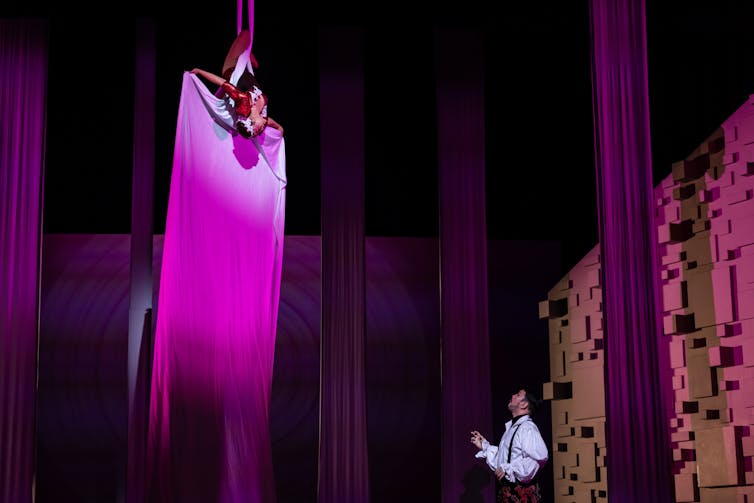
The world, separated
Digital elements punctuated the difficulties Orpheus has in navigating the world separated from his partner. As Orpheus descends to the underworld, the set design emulating pixelization, with electronic sounds and harsh lighting, placed Orpheus inside a digital hell.
Surrounded by dancing demons, Orpheus was steadfast in his quest to find his wife and eventually makes it to the Elysian Fields.
Orphée+ then discarded digital elements to reunite the lovers, making an eloquent argument for the connections that can only be made when we give our full attention to each other in person and remove all external distractions.
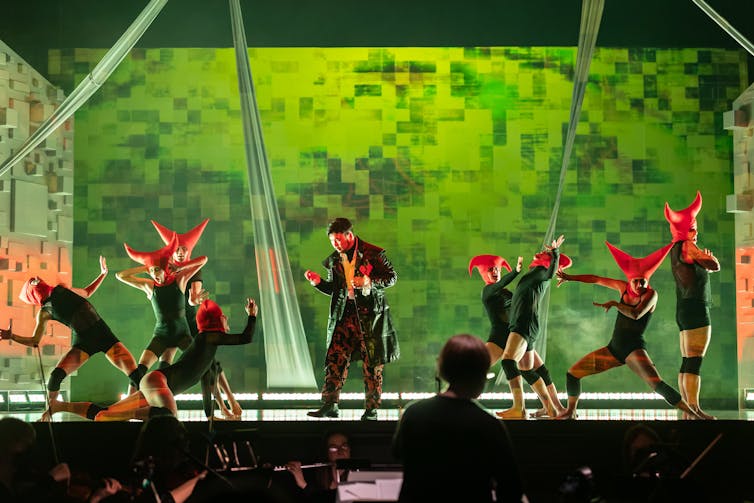
A new normal of relationship
The second half of Edmonton Opera’s show was devoid of digital elements. Eurydice and Orpheus were left alone on stage to try and navigate the new normal of their relationship.
Eurydice, not understanding Orpheus’s need to stay away from her and not look at her to honour the gods’ conditions, argued with her husband. She refused to follow him, questioning why he was blindfolded.
This second half and its conflict between husband and wife paralleled Roman versions of the myth. In the most famous extant version found in Ovid’s Metamorphoses, Orpheus speaks and, when he fails the test of not turning to look at his wife, Eurydice slips away with a barely audible “farewell.”
In the Roman poet Virgil’s Georgics, also about the myth, Eurydice is the one who speaks, not her husband; when Orpheus turns to look at her, she cries out a bitter farewell while lashing out at him for his weakness.
The practical needs of opera mean that Orphée+ combined the two: Orpheus sings, and Eurydice speaks back.
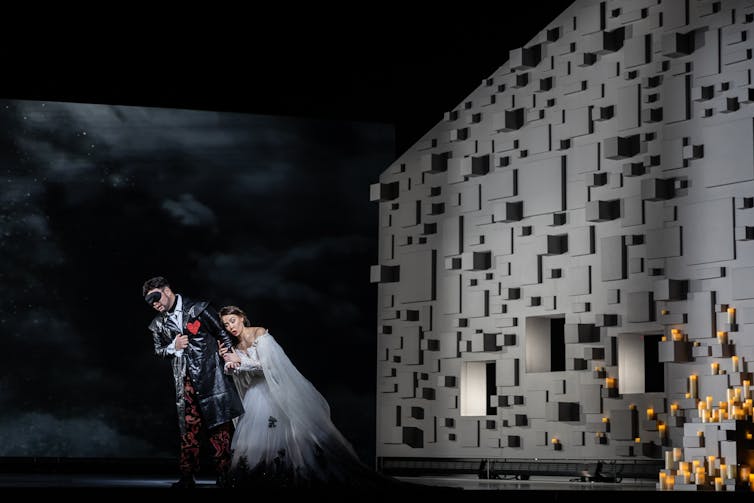
Human connection transcending separation
In Ivany’s Orphée+, the ancient treatment of love and loss is replaced with a message of human connection.
In 2023, the show speaks to transcending death and the physical separation of pandemic lockdowns.
By saturating the senses of the audience up to the intermission, the minimalism of the second half forced the audience to reflect on what happens when we give up everything to focus solely on what matters most.
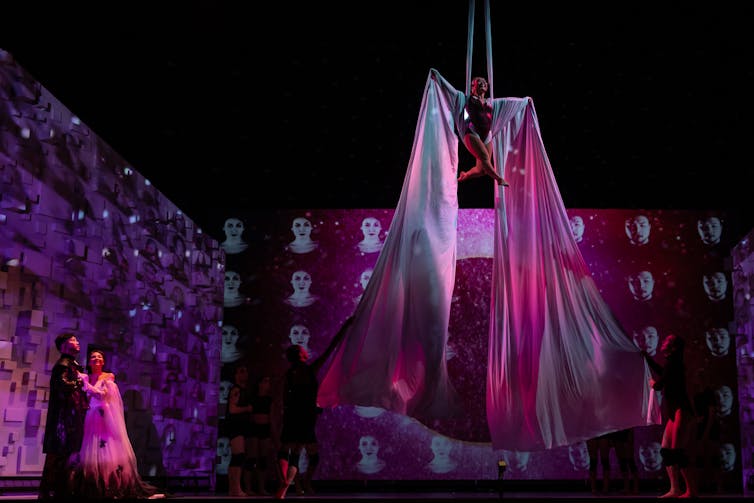
Questions about presence, precarity
Rather than a test of self-control and the moderation of desire as in the original myth, Orphée+ presents a testament to the strength of human connection and relationships amid extreme physical separation and disconnect.
In this way, the production echoes concerns identified by literature and culture scholar Monika Pietrzak-Franger and colleagues: the pandemic exposed existing crises about how arts’ organizations’ financial viability is connected to engaging live audiences. This raises questions not only about how our societies value art, but also about arts institutions’ cultural gatekeeping, and how strict adherence to what’s believed to be “traditional form” has creative, cultural and political implications.
It’s our hope, however, and that of many of the theatre practitioners we know, that the changes brought about by the pandemic will instead make “theatre more inclusive for all.”
The authors do not work for, consult, own shares in or receive funding from any company or organisation that would benefit from this article, and have disclosed no relevant affiliations beyond their academic appointment.
This article was originally published on The Conversation. Read the original article.



